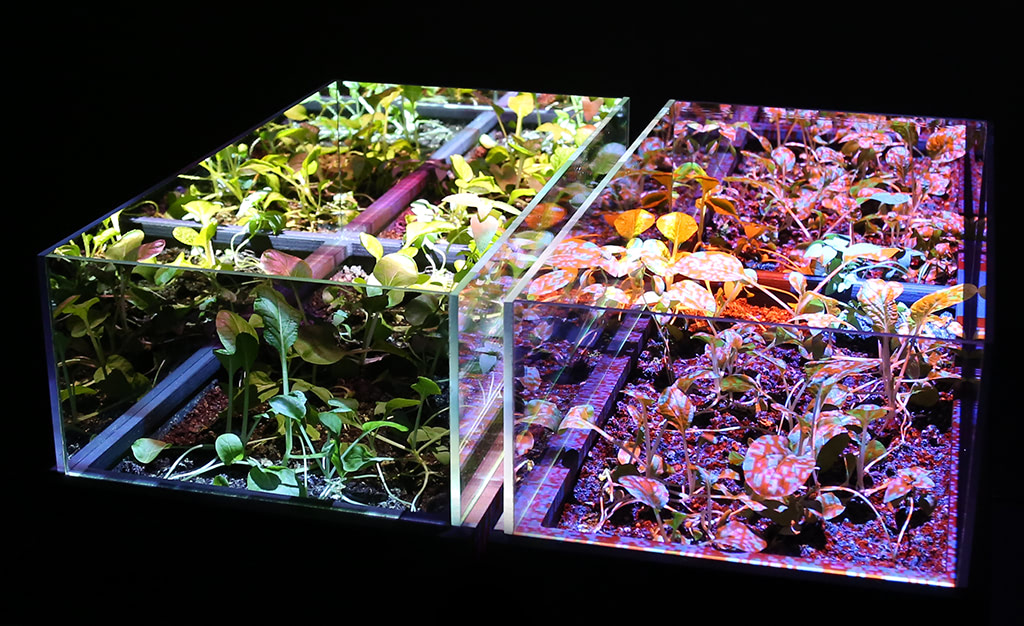From food, to medicine, to material, it was plants that once guided human culture. Now that our culture is the most powerful force on the planet, how does it treat our green cousins? The Internet is awash with culture’s output, especially videos.
To recycle culture into fertilizer, the Raised on YouTube project aims to grow plants using only the dancing light and sound of algorithmically curated video.
Plants can sense light direction, color frequency, and can be programmed to flower with cycles of darkness. They respond differently to colors of light: most plants hate the green spectrum and reflect it away (hence their green appearance). Different types of chlorophyll are stimulated by specific colors: red light makes plants grow tall and spidery and blue light makes them short and bushy. Grow beds raised with video mature into manufactured landscapes serving as data visualizations of concentrations of cultural energy.
Growing plants with user generated web video sutures the natural and cultural ecologies in the hopes that they will inter-grow into a whole.
The web enabled ecology game Raised On YouTube invites visitors to paste YouTube videos and get their photosynthetic power score. In the Spring of 2014, the videos were projected on plant grow beds and the resulting scene streamed to the web. Top three players with the most photosynthetic videos won prizes made from the plants grown with their videos.
The result is crowdsourced alchemy transforming the unwatchable glut of video content—a sort of cultural waste—into value.
One day, would it be possible to help maintain fair play in the game of ecology by encoding relationships of humans and nonhumans into multiplayer games?
Source: Raised On YouTube

Share your thoughts and join the technology debate!
Be the first to comment